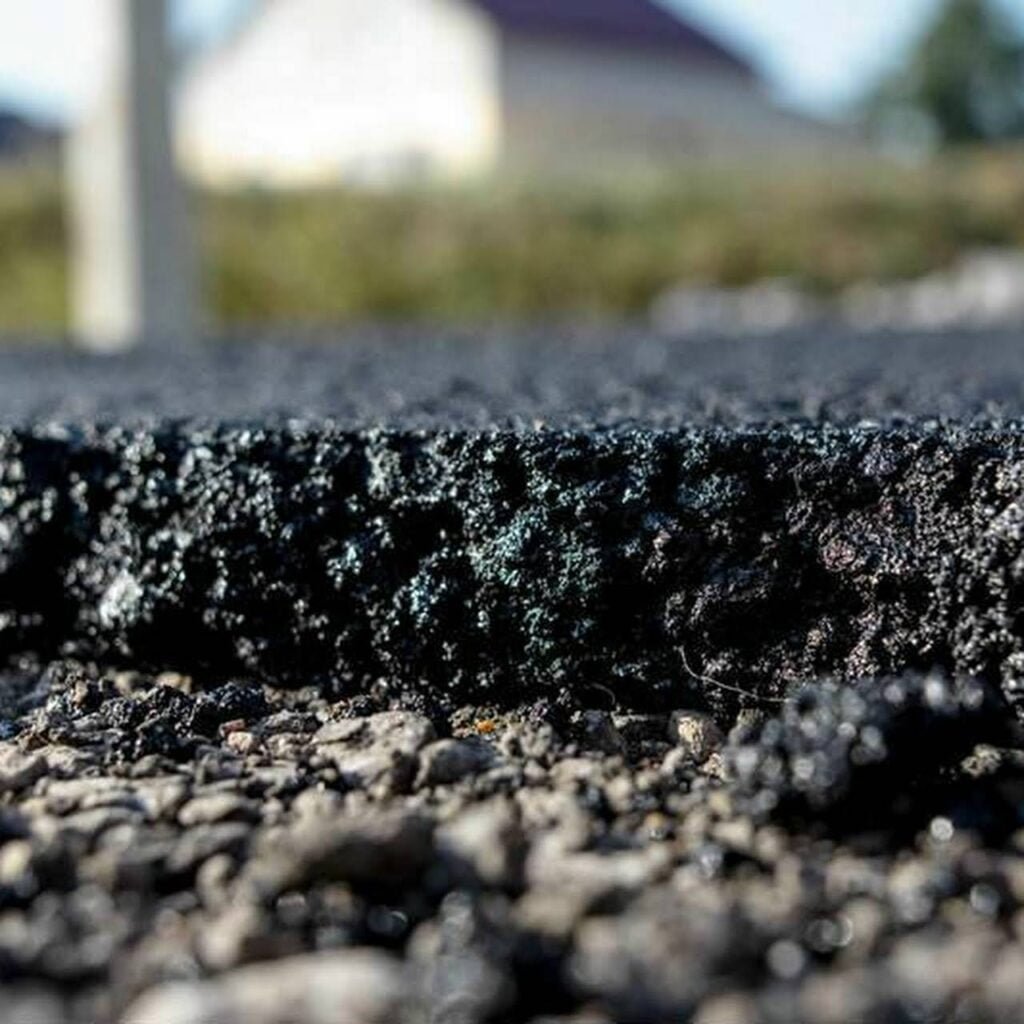The Gminsights market report states that batch asphalt mixing plants market led the global industry in 2016, in terms of revenue. It was worth more than USD 3.8 billion in the same year. This segment is likely to witness gains growing at CAGR over 1.2% in the forecast timespan. In batch production, the process is more flexible as the aggregate mixture can be changed for each batch produced. Another important feature of batch plants is the low running cost and low spare parts cost.Continuous asphalt mixing plants market is further divided into counter-flow and parallel-flow. In addition, continuous plants segment shall grow at a CAGR more than 1.3% over the forecast duration. This growth can be attributed to ability to deliver superior hot mix asphalt quality and low fuel consumption. Counter-flow plants are likely to witness prominent gains due to structure and design that aids in better aggregates heating with lower pollutants emission.
Asphalt mixing plants are widely used in tunnels, highways, bridges and road construction projects. Furthermore, booming automobile industry in Asia Pacific, particularly China and India, is placing greater demand on countries’ roads, which will eventually increase road construction and repair projects in this region. Additionally, increasing asphalt production globally is likely to fuel the product demand over the forecast timeframe. The U.S and Europe are two major asphalt producers in the globe. Asia Pacific held a major chunk of global asphalt mixing plants market and in 2016, it had generated revenue more than USD 2.5 billion. This has been attributed to the growing infrastructure market in Asia Pacific from 7% to 8% over the next few years. Countries in this region are largely concentrating on road construction activities, as these act as catalysts to country’s economic growth.
globenewswire.com reports that Asphalt Mixing Plants Market size is poised to surpass USD 7 billion by 2024; according to a new research report by Global Market Insights, Inc.Strong growth drivers in construction industry are likely to remain a prime factor propelling the asphalt mixing plants market in the forecast period. The industry is primarily driven by product demand from road construction and repair projects. Booming commercial and passenger vehicles sales across the globe shall consequently lead to rise in road repair and construction activities. This trend shall propel asphalt mixing plants market in the next few years. Road construction was the biggest application segment for asphalt mixing plants market in 2016 and shall grow at a CAGR of 1.6% in the forecast duration. Asphalt mixing plants are primarily used to produce warm mix aggregate which is used in road construction and repair activities. Latin America and Asia Pacific, followed by Middle East & Africa, are increasing their investments in improving public infrastructure, of which, road repair and construction, accounts for a major part. This dynamic will subsequently push the product demand in above region over the next few years in all these region..
Asia Pacific had a major share of the asphalt mixing plants market in 2016, both in terms of volume and value, and shall continue to hold its position in the coming years. The prime reason driving the market’s growth in Asia Pacific is the huge amount of capital being invested by governments, particularly of China, India, Thailand, Malaysia and Japan, to improve the road infrastructure of their nations. This shall prove as a new growth opportunity for companies planning to expand their production and operations in Asia Pacific as it possesses huge market potential.
Thecampingcanuck.com, states that The governments of various Asian countries including China, Malaysia, Thailand, India, and Japan are financing huge amount of capital to develop road infrastructure as they act as catalyst to country’s development and economic growth. In 2016, Asia Pacific asphalt mixing plants market generated revenue over USD 2.5 billion and is foreseen to hold a major share of the market pie over the coming years. Owing to the robust growth in the countries of Asia Pacific and Latin America, asphalt mixing plants industry from road construction application generated revenue over USD 5.5 billion in 2016.
Considering the energy efficiency factor, one of the key trends in asphalt mixing plants industry is the refinement of recycled asphalt pavement (RAP). The market for asphalt plant equipment with RAP are gaining considerable traction in the US and Europe, with China being on wild card. The asphalt mixing plants industry players are designing new plants to produce higher quality output and also handle the higher percentages of RAP.
Demand of asphalt and bitumen via highway projects

With India embarking on its most ambitious road building spree, the last two decades has seen the country emerge as a key global market for asphalt mix plants. Every kind of technology that has made a name for itself globally, whether it is continuous mix technology, batch mix technology, warm mix production, etc, has forayed into the Indian market. The market is now being driven by a more aware, discerning customer, for whom price alone is not the key purchase factor. The typical Indian customer today is looking at other factors such as technology, return on investment, aftermarket services, etc, before making the final choice. Contractors in the country are realizing that it requires prudent investments in technology to ensure that tough times can be sailed with relative ease. There is growing realization in the market that a quick fix solution with smaller investment, may not last long enough and may ultimately end up ruining long term profitability. The typical Indian contractor today is therefore not averse to experimenting with newer technologies.
India’s roads and highways expansion drive has led to a sharp annual growth in import of bitumen, a refinery by-product used in laying the surface of roads and highways, opening up a growing market for shipments from Iran, the UAE, Malaysia, Singapore and Greece. Indian refiners, in the meantime, are focusing on capturing the global market for high-end finished petroleum products, states a Livemint report.
The report further states that India’s roads and highways expansion drive has led to a sharp annual growth in import of bitumen, a refinery by-product used in laying the surface of roads and highways, opening up a growing market for shipments from Iran, the UAE, Malaysia, Singapore and Greece. Indian refiners, in the meantime, are focusing on capturing the global market for high-end finished petroleum products such as petrol, diesel and jet fuel with an eye on export markets, data from oil ministry’s arm Petroleum Planning and Analysis Cell showed.Imports from Malaysia and Singapore rose sharply in the April-February period of 2016-17 from a year ago in rupee terms, according to data from the commerce ministry.
The pace of road construction has picked up in the last few years. During 2012-14, highway construction was around 9km a day, which rose to 17.2km a day in 2015-16 and to approximately 22km a day in 2016-17. A record 47,350km of roads were constructed during 2016-17, the highest-ever in the last seven years, under the Pradhan Mantri Gramin Sadak Yojana (PMGSY). This contrasts with 25,316km of roads built in 2013-14, 36,337km in 2014-15 and 36,449km in 2015-16.
Experts said the trend of rising import of bitumen will get more pronounced in the coming years as the country makes more rural roads to improve connectivity. Today, roads are constructed with various types of modified bitumen, and global oil companies have been leading the way in polymer modified bitumen (PMB) research.
Warm mix asphalt, which is produced at low temperatures, is now among the many forms, which includes synthetic products alongside asphalt concrete, hot rolled asphalt, porous asphalt, stone mastic asphalts and thin surfacings. Such products have been developed to save money when building or maintaining roads or airports.
Conclusion
The spurt in road recycling projects is heartening news for all the stakeholders in the industry. RAP is emerging as big business in itself. Entire stretches of roads are being dug up, asphalt recycled and new roads laid in a jiffy. The use of latest technologies that can utilize RAP is heralding a new era in road construction in the country. As seen above almost every leading player in the market now offers asphalt plants that have the capability of working with RAP.
Projects, especially highway projects augur well for the asphalt plant suppliers. The positive signals are already there to see. Several road projects which had been delayed earlier are now being cleared, while new road projects are also being awarded. The government is also going that extra step in order to remove bureaucratic hurdles. Clearances are being obtained faster and this could mean a real turbo charged growth phase for the asphalt plant suppliers.globenewswire.com, states that, Bitumen Market size is poised to exceed USD 110 billion by 2024 stimulated by increasing government initiatives towards repair and redevelopment of the existing roads; as per the latest research report by Global Market Insights, Inc. The global bitumen market size is chiefly driven by increasing government spending towards road construction, maintenance and repair. It is widely used as binder in road constructions. In 2015, the U.S. road & highway construction business was valued at approximately USD 100 billion and is likely to grow significantly in coming years. In addition, growing roadway usage in cities and counties in Asia Pacific will pave the way for broader roads. High water resistance, viscosity and stickiness, combined with a growing demand for widening roads and creating new roadways will help stimulate bitumen industry growth.Highly water insolubility of bitumen enables it to be used as sealants and adhesives in marine applications for waterproofing applications. It is also used in water tank manufacturing to help preserve the precious commodity by curbing evaporation and leakage in storage. This demand in the construction industry was a major driving factor in the past and will be a strong driver in coming years.





